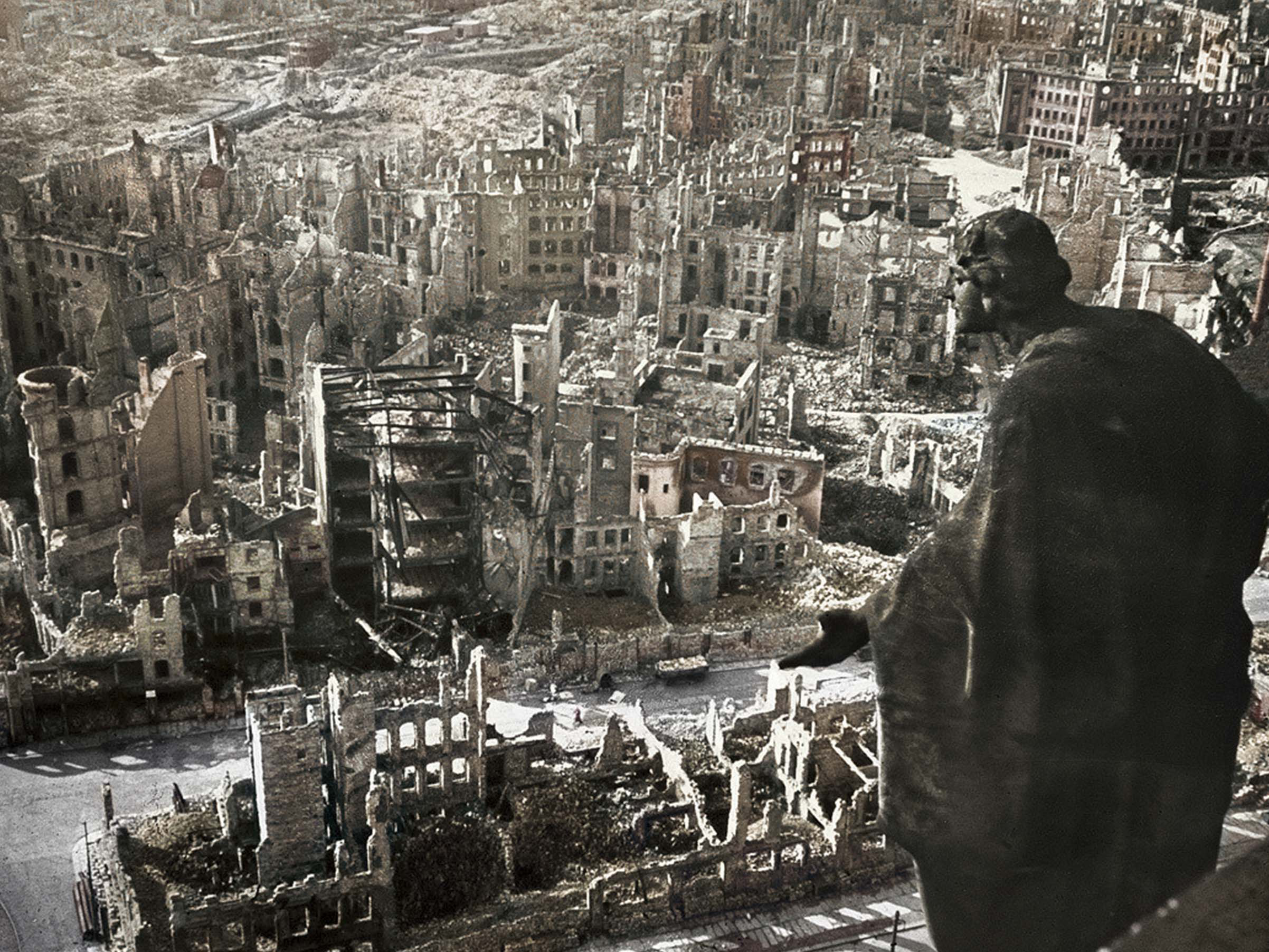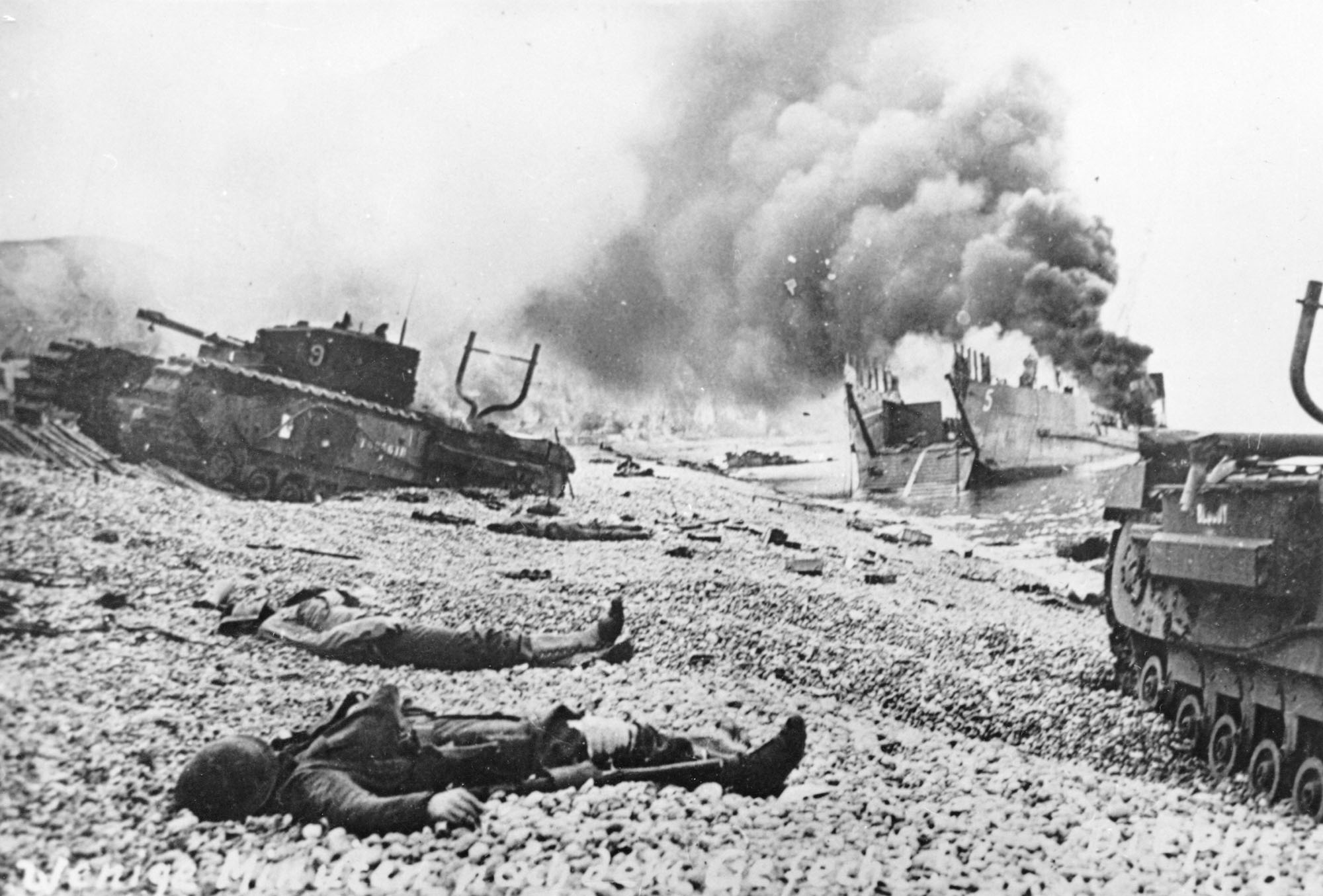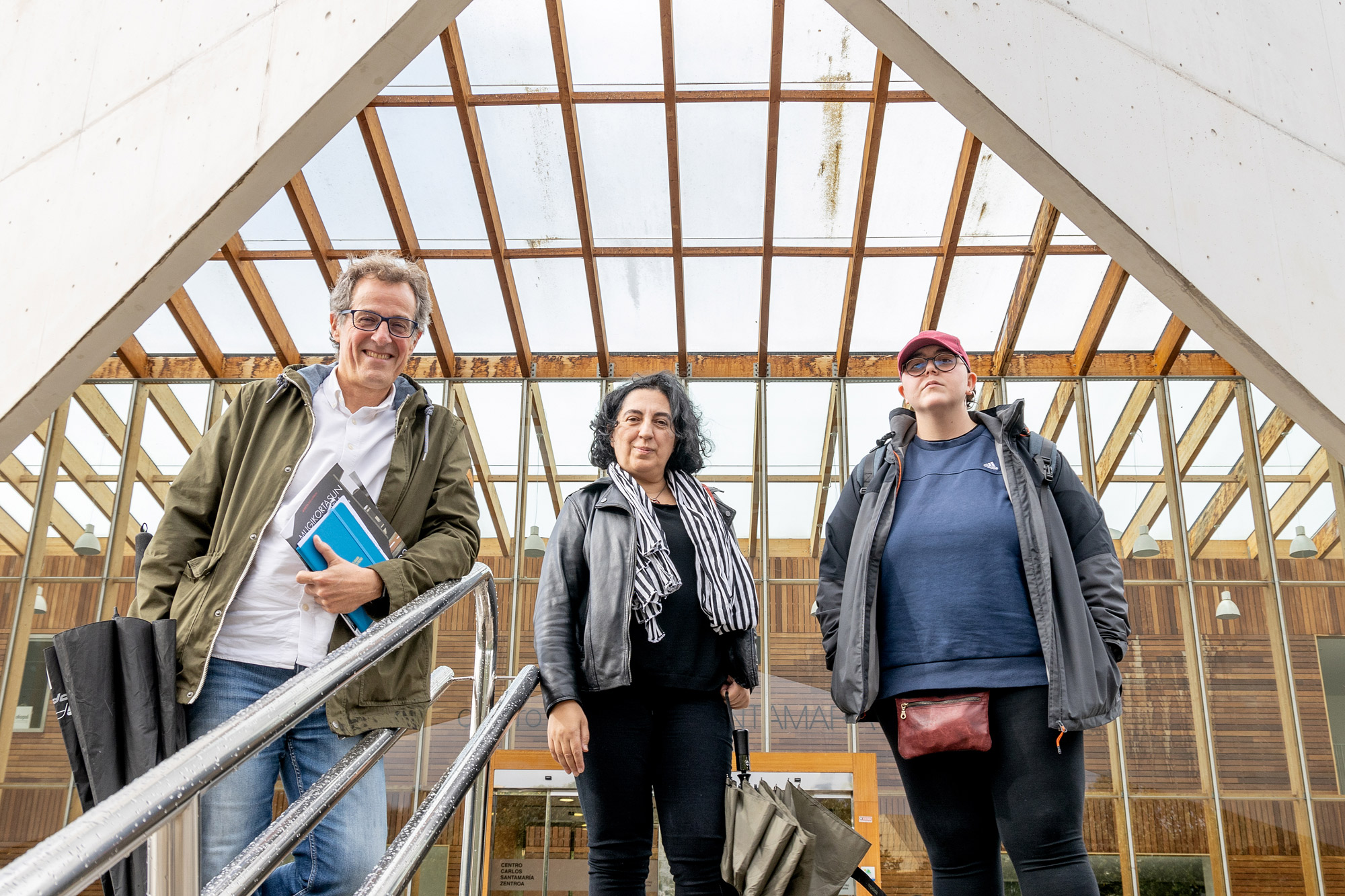Report of a frustrated journey
- German photographer Marianne Breslauer travelled the Basque Country in the spring of 1933, together with Swiss writer Annemarie Schwarzenbach. With the objective of Pamplona, they stayed about six days in the corners of the capital of Navarra, with a total of nine photographs. However, when they returned to Berlin, things were not as they had left.
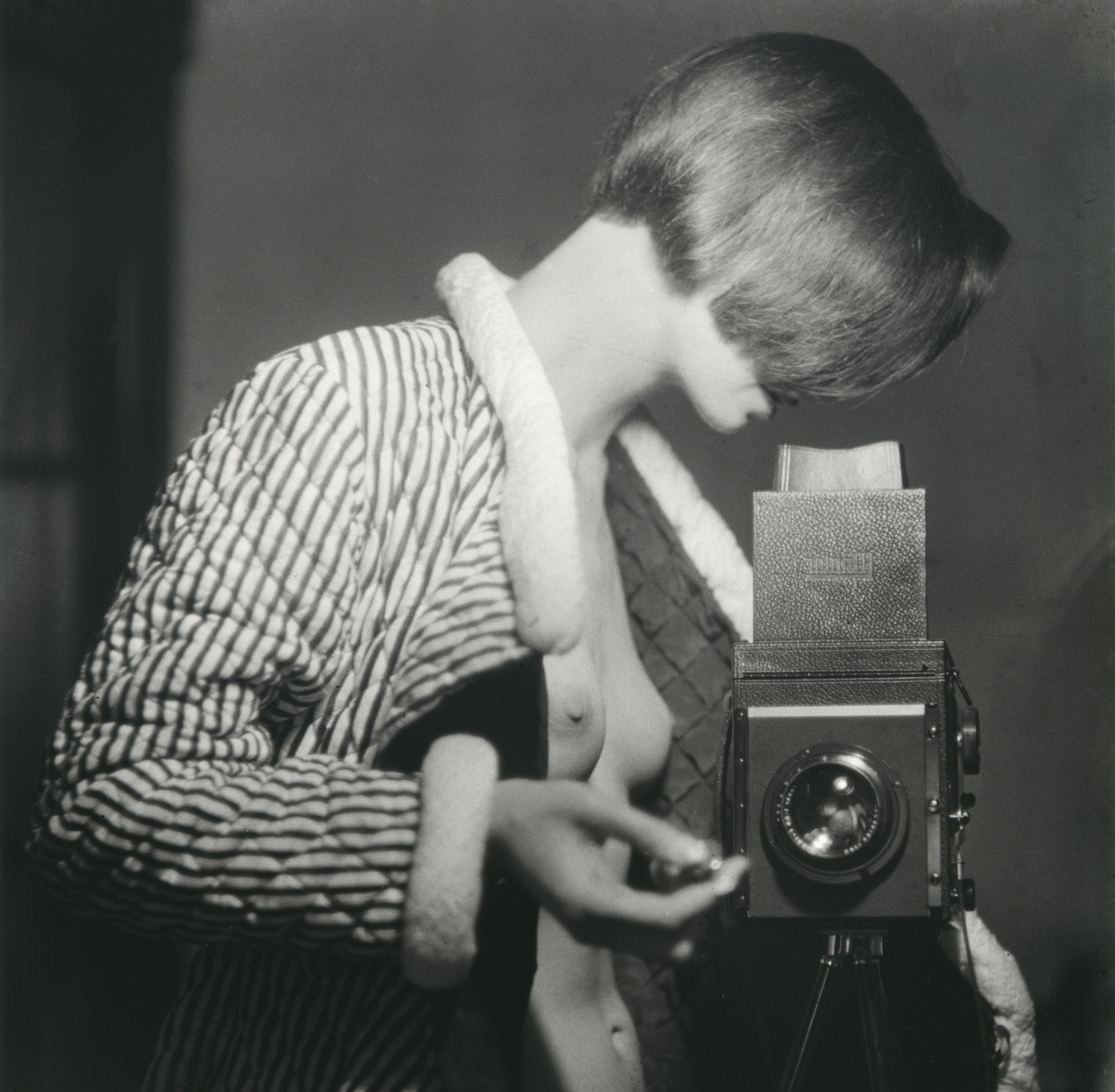
It was at the San Telmo Museum in San Sebastian, where you can see the beautiful exhibition A unique modernity, in which you can recognize the outstanding place that San Sebastian had between 1925 and 1936, in one of the brightest and most fruitful moments of the vanguard. It was José Luis Aizpurua, Nicolás Lekuona, Juan Cabanas Erauskin, Eduardo Lagarde, etc. who saw posters, paintings, collages and, above all, photographs – which were part of a historical moment of the creation of Basque art, besides its importance within the Spanish avant-garde –: kontxo, our modernity has not had women.
In the 1920s, it was fashionable for high-class daughters to study photography.
Of course, it was not ours, at least if we look at the nomenclature of that exhibition. But modernity in general does. Not perhaps in Donostia, but yes, for example, in Germany. Specifically, San Sebastian was a kind of claim within the cultural revolution of the Weimar Republic. For example, Marianne Breslauer: Born in Berlin in 1909 in a family of the high enlightened German bourgeoisie of Jewish origin. The photographer, in fact, this profession, photography, was fashionable in the 20s of the 20th century among the upper-class daughters. The social changes made the bourgeoisie women also learn a trade, just in case they were single. And photography wasn't the most inappropriate thing, being artistic education. Moreover, as it was a novel resource, the incorporation of women was easier than in other artistic disciplines.
Breslauer studied at a female photography center located in Berlin. Once these were completed, it settled in Paris, driven by the ambition of the time. It started in Man Ray's studio in 1929. However, the contact and influence between the two were not very close. Perhaps it was more tight when Breslauer fell stunned over Man Ray while watching the movie A Andalou Chien, the scene where the knife slipped his eye. Yes, portraits were made, but the author of the film, Emak bakia, said that the young German knew enough or that he did not want to receive the novices, to be in charge.
Breslauer, at least his photographs, had something more related to the Hungarians and the French Brassaï and Kertész. Especially with the latter, because they shared an irreflexive desire: they traveled to Paris the two, through streets, corners, corners, losing through the city, photographing completely normal people. They caught scenes from everyday life, moments that go unnoticed, vanities. What has been called poetic realism in the face of new objectivity.
Breslauer wasn't a studio photographer, he was more of what we now know as a photojournalist.
Breslauer was by no means a studio photographer. Even from a moment on, more is known as a graphic or photojournalist news. He traveled to Italy, France, the Netherlands, Palestine. She met her in 1932 as the writer Annemarie Schwarzenbach. Important knowledge: Schwarzenbach, Swiss, 1908, son of Thomas Mann, Klaus and close friend of Erika, author of books such as Tod in Persien (Death in Persia) or Alle Wege sind off (All roads are open). In the second, it is precisely a journey that runs through the Balkans, Turkey, Iran, Afghanistan. Schwarzenbach, which symbolizes the feeling of exile of modern man, because he knows that there are no houses, homes, homes, panals: “My disease is not ephemeral.” Of irregular life, surely the biography has darkened the work of the Swiss. However, it had a huge influence on Breslauer.
In fact, they thought of a trip in the spring of 1933, to Spain (sic), where it was most common not Andalusia, in northern Spain (sic). It seems risky, but not so strange: the journey was precisely one of the traits of the neue Frau, a new, modern, seemingly free woman. In the 1920s, new mass resources appeared, illustrated magazines, advertising, cinema; and women playing with the hair at the garçon, pants, masculine, ambiguity of the sexes. They liked leisure time, sport: gymnastics, swimming, tennis. And the car.

The car was the locomotion road that Breslauer and Schwarzenbach chose for their trip. It wasn't a holiday trip, they had to write and take pictures for a German photography agency. After touring Catalonia, crossing the Pyrenees, they visited Pamplona, Donostia-San Sebastián, Loiola and again Pamplona. They were excited about the head of the city. The author Ernest Hemingway, more specifically his own novel The Sun Also Rises, also known as Fiesta, returned to German in 1928. Breslauer probably not so much, but Schwarzenbach, knowing his biography and his work, felt confident identified with the characters in the novel that represented the lost generation.
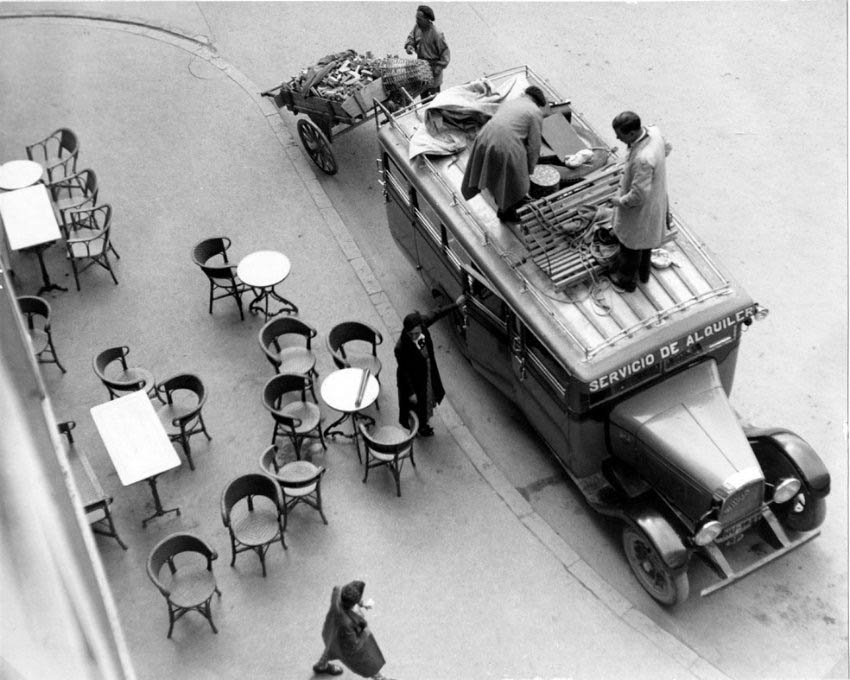
The journey took place, therefore, “trying to breathe the atmosphere described by Hemingway”. But, although Pamplona may be the holiday all year round, May is not sanfermin, and few photos of Breslauer, Schwarzenbach did not dedicate him a single report. The photographs of that trip, in general, are not a significant place, those made to important monuments, except the Basilica of Loiola. Yes, on the contrary, small details, characters that attract attention, especially younger children. San Sebastián, port area; Pamplona, street stamps. In total, twelve. Some images show travellers' curiosity: Mercedes Mannheim, a brilliant white without hood, two women without man, foreign, tall, short hair, with a cigarette in her hand. Some of the portraits that they used to criticize education in Spain said they were going to run with a new form of government. Interest in the changes introduced by the Second Republic was above all high.

After Berlin, the reports could not be published in Germany. On 30 January 1933, Adolf Hitler was appointed head of the German Government and shortly thereafter began to revoke several citizens’ rights. The photography agency did not dare to publish Breslauer’s work by name, since it was not Ariana. In 1936 he had to take the way of exile, to Amsterdam, and then go to Switzerland, where he lived until his death came to him in 2001. But with World War II, he lost hunger for photography. He once acknowledged that lifestyle changes – exile, marriage, children – did not allow him to concentrate enough on photography and did not want to reduce the quality of photographs.
The golden age of San Sebastian, as we have said, lasted in the Second Republic and until the beginning of the War of 36. This war therefore ended with all the art that was done on the margins – not only with the one on the side of the Republic: Falangist Aizpurua shot; Lekuona died in the National Army, in a bombing of the nationals themselves and in health care. In Germany, the rise of Nazism brought many to eradicate a way of life. And in the case of Marianne Breslauer, the frustrated journey was not so much to Pamplona without parties, but to the photographic trajectory that forced him to abandon the new political circumstances of his country. Fortunately, he has recently recovered and his work has come to us. Not far away, what we should do in our home too.
Porzheim, Germany, February 23, 1945. About eight o’clock in the evening, Allied planes began bombing the city with incendiary bombs. The attack caused a terrible massacre in a short time. But what happened in Pforzheim was overshadowed by the Allied bombing of Dresden a few... [+]
Japan, 6 and 9 August 1945, the United States launched an atomic bomb causing tens of thousands of deaths in Hiroshima and Nagasaki; although there are no precise figures, the most cautious estimates indicate that at least 210,000 people died at the end of that year. But in... [+]
Born 27 June 1944. The German soldiers carried out a raid on a small town of about 80 inhabitants of Zuberoa. Eight people died on the spot and nineteen were arrested, all civilians, nine of whom would be deported and only two would survive from the concentration camps in which... [+]
Normandy. 6 June 1944. They started operation Overlord: Thousands of British, American and Canadian soldiers landed on the beaches of Normandy to drastically change the course of the Second World War and, therefore, history. Or at least that's what we've been told a few days ago,... [+]
Genocide is unfortunately a fashionable word. According to Rafael Lemkin’s definition in 1946, genocide is defined as “actions aimed at the total or partial destruction of a national, ethnic, racial or religious group.” These actions may include “killing the members of... [+]
Karl Adolf Eichmann (Solingen, Imperio alemán, 1906 - Ramdel, Israel, 1962) foi o oficial superior das SS da Alemaña nazi, especialmente coñecido polo seu nomeamento como “responsable loxístico” da chamada Última Solución ou Última Solución. A planificación do... [+]











